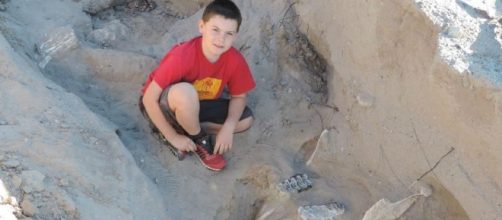A family hiking trip the Las Cruces desert in New Mexico turned into a significant paleontological event as a 10-year old boy literally stumbled upon an extremely rare Dinosaur fossil.DD, according to NMSU Edu News.
Jude Sparks, together with his parents and two brothers, was spending their time exploring the rugged New Mexico desert last November. While Jude and his two brothers were testing their walkie-talkies, the 10-year old boy tripped over what appears to be a darkened cow skull.
"I was running farther up, and I tripped on part of the tusk," recalled Jude, according to Live Science.
Jude noted that his face landed on what seemed to be a bottom jaw. Looking further up, the boy noticed another tusk.
As it turned out, the skull was actually a million-year-old fossilized skull of a Stegomastodon, a now-extinct ancient relative of elephants described as having two enormous tusks that curved upwards and stood nearly nine feet tall.
An Extremely Rare Discovery
Peter Houde, a biology professor at a New Mexico University noted that a Stegomastodon skull as complete as the one discovered by the Sparks family is extremely rare. The professor applauded the family for reaching out to him instead of trying to unearth it themselves.
“A stegomastodon would look to any of us like an elephant,” said Houde, in a press release.
Stegomastodon is probably one of the most common types of ancient elephants that lived in the area. However, finding one is still considered to be very rare. Houde noted that the discovery may the second complete skull to be unearthed in New Mexico.
Painstaking Digging Process
Digging up Fossils is easier said than done. It took months for Houde to get permission from the landowner to dig out the fossils and prepare the chemicals needed for the digging process. The landowner agreed with the dig on the property as long as the exact location of the site remains a secret.
The team first needed to painstakingly brush off every bit of dirt from the exposed part of the skull before applying chemical hardeners in order to preserve the structural integrity of the skull.
Houde noted that when sediments are removed from the sides of the fossils, it may start to fall to bits and crumble if left exposed to the sun for a few days.
The team was able to unearth a nearly complete skull, only missing a tusk. The unearthed fossil was coated with plaster and placed in wood braces for support during transport.
Houde estimates the weight of the entire skull to be about a ton, while the jaws weigh approximately 120 pounds.


